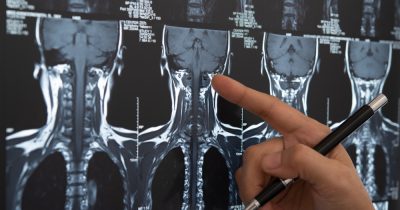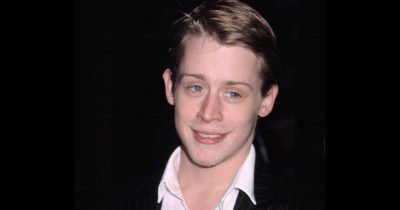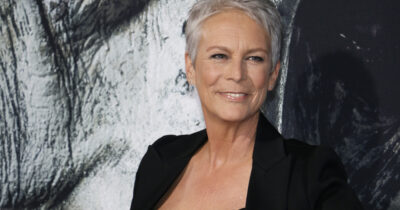
Victoria Wright was born with a very rare genetic condition called cherubism. The lower part of her face had an abnormal bony overgrowth, and when she was four, the first signs started to be seen. At first, doctors didn’t know what the cause was.
As doctors described it, Wright’s face is as heavy as a bowling ball. As she grew older, she suffered from bullying at school and even when taking the bus. Despite that, Victoria was determined to live her life to the fullest, never letting the bullies win. Today, she has become a great role model and spokesperson. Here’s a look at her life – and what she looks like today.

We all look different, and that, indeed, is what makes us unique and exciting. Some grow up to be tall, others short, some easily put on weight, while some won’t add a pound despite lousy eating habits. We all have different hair colors – or no hair at all. Everyone has attributes that make us unique.
And every year, babies are born with specific syndromes, diagnoses, or unusual facial appearances. It can surely make life more challenging, but in reality, those with these unique facial appearances are the strongest and boldest of us all.
Victoria Wright – born with cherubism
One person that this certainly applies is Victoria Wright. She was born with cherubism, a rare genetic condition associated with variable degrees of abnormal bony overgrowth on the lower part of the face. As a result, she was bullied in school and called various evil nicknames – and as a grownup, she still receives humiliating comments.
But Victoria would never let the bullies win. Instead, she turned into a role model for people worldwide – and decided to show the world how it is living with a facial disfigurement through humor. Her inspirational story is worth sharing, and we would love for you to share this article with your friends and family!
Victoria Wright was like any other baby when she was born. Her parents were incredibly happy for their beloved girl, and everything seemed to be perfect. But one day, when she was four years old, everything changed.
“My mum was brushing my teeth, and she noticed they weren’t in the right place,” Victoria Wright told NHS.
The first signs of cherubism had appeared, a rare genetic condition associated with variable degrees of abnormal bony overgrowth of the lower part of the face. It was named after the angelic figures in Renaissance art which are often depicted as chubby-cheeked.

Victoria and her family went to medical professionals, who indeed confirmed that cherubism had been detected. They told the Wrights that Victoria’s condition would regress after puberty. However, as we know today, that didn’t happen.
Instead, Victoria Wright’s jaw grew larger, and it didn’t take long before it began affecting her eyes. The pressure on her eyes became more and more severe. It got to a point where something needed to be done.
Suffered from bullying everywhere she went
She had surgery to relieve the pressure, and it saved her eyesight. However, due to her impaired vision, she still suffers from headaches even today.
“Cherubism isn’t a painless condition. I do get twinges of pain. My head is very heavy. Doctors say it’s as heavy as a bowling ball,” Wright explained.
“I’ve been offered surgery on my jaw to make it smaller, but I don’t think it would improve my appearance. I’m used to the way I look.”
Victoria Wright’s life became a struggle once she started school. In a piece she penned for The Guardian, she described how she experienced bullying, threats of violence, intimidation, and verbal abuse on the street and public transport.
Children at school called Victoria names such as Fat Chin, Buzz Lightyear (the astronaut character from Toy Story) and Desperate Dan (a wild west character from the Scottish comic magazine The Dandy).
“A girl used to draw pictures of me in class and share them around,” Victoria said.
Everywhere – no matter if it was at school, on the bus, or if she was walking down the street – people stared at Victoria. She never got used to the stares, but later, she understood it was only human.
“I try not to take it too personally. We all stare, even me,” Wright said.

“As a teenager, I used to get angry, but that doesn’t do any good to you or the person staring. It just reinforces the stereotype that people with disfigurements must be angry, tragic, or scary. If I find myself being stared at in an aggressive way, it can be unsettling. But I don’t let it get to me.”
She continued, “If someone’s staring out of curiosity, I just smile and nod to show them I’m a human being and there’s nothing to be scared of. Most of the time, people smile back. That’s a good feeling, because I know I’ve made a small connection with them.”
Victoria Wright – ‘Changing Faces’
When Victoria Wright became a teenager, her life changed. She discovered the charity Changing Faces, which has now become the UK’s leading charity for people with a scar, mark, or condition on their face or body. Founded in 1992, their website says they “provide life-changing mental health, wellbeing, and skin camouflage services” and “work to transform understanding and acceptance of visible difference, and campaign to reduce prejudice and discrimination.”
Through Changing Faces, Victoria found a lot of support. Besides her family, friends, and teachers at school, the foundation was crucial for her to realize that despite her facial disfigurement, she was worth just as much as everyone else.
“As a teenager meeting them, I felt, ‘Wow, you can have a career and be happy and confident with a disfigurement,” she told NHS.
“Sometimes you can feel isolated, especially if you have a rare condition. It’s difficult if you don’t see anybody else in the street like you. Getting peer support is so important. For every person who stares, there are a hundred others who don’t and who will like and respect you for who you are.”

Through Changing Faces, Wright got a new perspective on her life. She began seeing the positives and even took a humorous stand regarding her appearance. She told 60 Minutes Australia that she “adores” Buzz Lightyear from Toy Story and kind of sees him as her brother.
Many people have questioned why Victoria doesn’t opt for plastic surgery to ‘do something’ about her face. She has also been falsely portrayed in the media for being anti-cosmetic surgery because of it.
However, in reality, Victoria Wright is not at all against cosmetic surgery. The most important thing is to be satisfied with how one looks to themselves – and that is the case for her.
“I’m not going to change myself to make other people happy”
“I’m certainly not against people with disfigurements having surgery, but I’m fine with the way I look. Why should I have the surgery for other people?” Victoria Wright asked.
“I’m happy with my face most days. After all, I’m a woman, and no woman is completely happy with the way she looks. But I’m not going to change myself to make other people happy.”
She added, “I don’t want to hide at home, afraid to go out and afraid of other people. If they have issues about how I look, it’s their problem, not mine.”
In 2016, Victoria Wright became known to an even wider audience as she was one of the stars in the BAFTA-nominated comedy-drama mockumentary Cast Offs. It followed six disabled people sent to a remote British Island for a fictional reality series.

It included one blind man, a paraplegic man, and, of course, Victoria, who has cherubism. As reported by The Guardian, each character was played by a disabled actor with the same disability, and one even complained about the number of non-disabled actors portraying disabled people:
“There is likely to be a storm of comment from disabled people and non-disabled people alike over Cast Offs. Some disabled people will find it funny and real – portraying disabled people as adults who swear, drink, and have sex. A real break from covering disability with kid gloves or not covering it at all. Others may well find it offensive,” Liz Sayce, chief executive of the Royal Association of Disability Rights, told the newspaper.
For Victoria, doing the show was nothing but amazing. And in a Q&A she led with directors Miranda Bowen and Amanda Boyle, they told a short but telling story about her. Once again, she had decided to make it humorous.
Victoria Wright was born with cherubism – this is her today
“I remember in your casting Victoria, you had to invent a secret. You claimed that you’d had plastic surgery to become funny-looking. I remember the look on the face of the person you were acting with. It was a brave, bold, and funny moment – everything we were looking for,” Boyle said.
Miranda added, “I often forgot that neither of you [Victoria and co-star Peter Michell] had acted before. You both performed with great professionalism and proficiency, and it was a joy working with such a talented group of actors.”

Victoria Wright’s life progressed with joy; today, she is a loving mother and a productive disability rights campaigner.
Moreover, she has become the spokesperson for Jeans for Genes in the UK, which is the annual fundraising event for the genetic condition community.
“Throughout my life, I’ve met people who assume that because of how I look, I must live a depressing, isolated life, but I have a good life. I’m a charity campaigner and public relations professional, and I’m blessed with a young daughter who makes me laugh every day,” she said.
Victoria Wright inspires so many people, with or without disabilities. She teaches us to be humble and proud of who we are, as everyone should be.
Please, share this article on Facebook with your friends and family to honor Victoria – and if you also think everyone deserves to be treated fairly no matter how you look!




